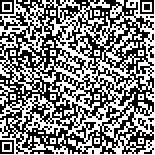| 本文已被:浏览 3441次 下载 1652次 |

码上扫一扫! |
|
|
| FeNi合金镀铁缸套的摩擦磨损性能 |
|
金梅1, 韩晓光2, 董文仲3, 沈岩1, 朱峰2, 徐久军2
|
|
1.大连海事大学 轮机工程学院, 辽宁 大连 116026;2.大连海事大学 船机修造工程交通行业重点实验室, 辽宁 大连 116026;3.大连海事大学 董氏镀铁有限公司, 辽宁 大连 116026
|
|
| 摘要: |
| 采用对置往复式摩擦磨损试验机,选用CKS活塞环为配副,以摩擦因数、磨损量、断油摩擦时间为表征参数,以BP合金铸铁缸套为参照对象研究FeNi合金镀铁缸套的摩擦磨损性能,探索FeNi合金镀铁缸套的磨损机制。逐级加载的磨损试验表明:FeNi合金镀铁缸套的摩擦因数较BP合金铸铁缸套增大11%~20%;而磨损量则降低了11%;贫油试验表明两种缸套拉缸时间均随载荷增大而缩短,在40 MPa时FeNi合金镀铁缸套的拉缸时间较BP合金铸铁缸套延长了约6.5倍。与BP合金铸铁缸套的磨损机理为基体碾压平台在反复接触应力作用下脱落,以及犁削/切削形式的磨粒磨损不同,FeNi合金镀铁缸套的磨损机理主要是网状裂纹周围镀铁层的疲劳剥落。 |
| 关键词: 摩擦因数 磨损量 贫油试验 FeNi合金 BP合金铸铁缸套 电镀 |
| DOI:10.11933/j.issn.1007-9289.2016.05.016 |
| 分类号: |
| 基金项目:国家自然科学基金(51509029);辽宁省教育厅基金(L2015065);中央高校基本科研业务费专项资金资助项目(3132015032) |
|
| Friction and Wear Properties of FeNi Alloy Plated Cylinder Liner |
|
JIN Mei1, HAN Xiao-guang2, DONG Wen-zhong3, SHEN Yan1, ZHU Feng2, XU Jiu-jun2
|
|
1.Marine Engineering College, Dalian Maritime University, Dalian 116026, Liaoning;2.Key Laboratory of Ship-Machinery Maintenance & Manufacture, Dalian Maritime University, Dalian 116026, Liaoning;3.Dong's Iron Plating Co., Ltd., Dalian Maritime University, Dalian 116026, Liaoning
|
| Abstract: |
| The tribological characteristics of FeNi alloy plated cylinder liner were studied by using a self-developed contraposition reciprocating test rig with the CKS piston ring as counterbody, compared with that of the BP alloy cast iron cylinder liner. The friction coefficient, wear loss and cylinder scuffing time were measured separately to explore the friction and wear mechanisms of the two friction pairs. The results of the step-load experiment show that the friction coefficient of FeNi alloy plated cylinder liner increases by 11%~20% to BP alloy cast iron cylinder liner. However, the wear loss shows a contrary tendency which decreases by 11% . The starvation experiment shows that the cylinder scuffing time for the two friction pairs is shortened with increasing applied load, and the cylinder scuffing time for FeNi alloy plated cylinder liner is about 6.5 times longer than BP alloy cast iron cylinder liner at the load of 40 MPa. The wear mechanism of BP alloy cast iron cylinder liner is possibly attributed to the plastic flow layer separating from the substrate by friction force, with ploughing/cutting as the form of abrasive wear. However, the wear mechanism of FeNi alloy plated cylinder liner is mainly fatigue spalling around the mesh cracks of the plating layer. |
| Key words: friction coefficient wear loss starvation experiment FeNi alloy BP alloy cast iron cylinder liner plating |